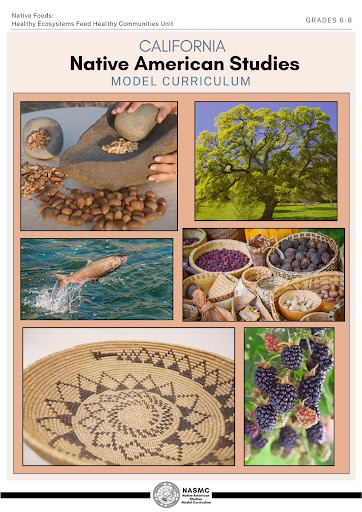Overview
Free Resources!
My Native Plate

Author: This unit was researched, authored, and edited by the California Indian Museum and Cultural Center, California Indian Education for All, and the San Diego County Office of Education. Key writers and researchers of this unit are Nicole Lim, Jayden Lim, and Dr. Staci Block. The unit resources were designed and created from funding through the California Department of Education’s Native American Studies Model Curriculum grant and contract.
Grade(s): 6th-8th Grades
Suggested Amount of Time: Two 60 minute Class Periods
Curriculum Themes
- History
- Relationship to Place
Learning Goals
Understand the nutritional components of a balanced diet, including carbohydrates, proteins, and fats.
Explore the origins of food and the role of Indigenous foods in local ecosystems.
Create a personal "Native Plate" meal using Indigenous foods that align with their nutritional needs.
Recognize the health impacts of poor dietary choices and the role of Indigenous foods in promoting wellne
Lesson Overview
In this lesson, students will explore a Pomo story to understand the importance of oral tradition in teaching lessons about community, respect, and connection to the environment. Through reading and analysis, students will gain insight into Native perspectives on interdependence and stewardship of ecosystems.
Teacher Background
In this lesson, students learn about their individual nutritional needs, and practice designing nutritious meals using Native foods. Students build awareness around where their food comes from and continue to consider the impact of their food choices. This lesson begins by introducing students to a map highlighting the origin of the world’s top 151 crops. Interestingly, although California has hundreds of edible Indigenous plants and animals, it is the origin of only six of the world’s most common crops. This is due to a variety of factors, such as the increased in large scale industrial farming, a decrease in traditional land stewardship methods, and an overall lack of visibility of the Native community.
Showing students the origins of their foods illuminates a few things. The first is that it highlights just how many foods come from the Americas. Tomatoes, for example, come from Mexico, despite being a staple in Italian food. Secondly, it shows how much of the typical diet in the United States relies on imported food. Indigenous food in the United States is diverse enough to satisfy a range of dietary needs and desires, if only it is given the attention is deserves.
Once students examine the map of food origins, they move into a lesson that requires them to reflect on their own eating practices and consider ways to incorporate more Native/Indigenous foods into their diets.